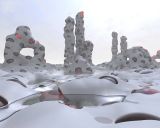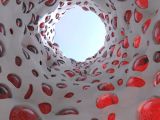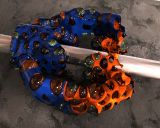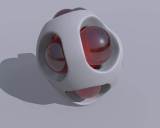Random repartitions
After a few times when I ended up putting random objects in a given space avoiding intersections, I decided to write a general purpose tool to provide functionalities helping to do that. The problem can be simplified by putting non intersecting spheres in a given volume or surface.
So the include allows to you to place spheres of various diameters in a cube, sphere, mesh and other shapes. It also provides some operations on the obtained set of points, like union, difference or transformation. Another include is also present in the package to show a possible use for these sets of points. The two examples above are provided in the package.
Note that some repartitions, when there is a lot of points or when the objects to be filled has a small volume inside its bounded box, can take a lot of time. Some optimisation are possible in the algorithm, but I don't forcast to do them in a near future. It is adviced to use the save functionality for the result file after long calculations to avoid loosing time.
Download Répartition v1.0
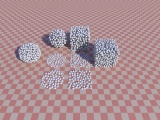 |
This image just illustrates the basic functionalities of the random repartition include. Nothing too impressive. :-)
| Simple repartition example
| |
|
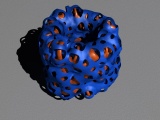 |
This image illustrates one possible use of the points sets generated by the random repartition include. For that purpose it uses another small include points_blobs.inc to generate complex blobs.
| Repartition use example
| |
|
Other images of this site also intensively use these tools.
|
|
|
|
|
|
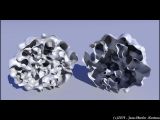 |
Some kind of museum specimen, an hollow brain, cutaway.
| The brain
| 12/2004
|
|
|
|




